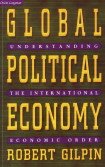

Good News for Youth Workers
I especially love this picture on the right as those are my folks in the middle. It took twelve years for justice to be served to the innocent in Nova Scotia.
Youth workers win compensation deal
http://www.cbc.ca/ns/story/ns-compensation20060606.html
Day of vindication for youth workers, says Keating
http://www.herald.ns.ca/Front/508499.html
Former N.S. youth workers get $7.5M settlement
http://www.ctv.ca/servlet/ArticleNews/story/CTVNews/20060606/ns_abuse_060606/20060606?hub=Canada
Falsely accused youth workers receive $7.5-million
http://www.theglobeandmail.com/servlet/story/RTGAM.20060606.wnsabuse0606/BNStory/National/home
Kaufman Report: Nova Scotia Department of Justice
http://www.gov.ns.ca/just/kaufmanreport/index.htm
Oh boy! Happy New Judges!
http://www.courts.ns.ca/judges_appointed_2_9_05.htm
http://www.csulb.edu/~dsidorov/articles/canada-shelburne01.13.00.htm
January 13, 2000
SHELBURNE JOURNAL
Tales of Sex, Violence and Greed in a Small Town
By JAMES BROOKE
SHELBURNE, Nova Scotia
Five years ago, this seaside fishing village of gabled roofs and colonial alleys served as a movie set for "The Scarlet Letter." But in real life the witch hunt haunting Shelburne revolves not around "A" for adulterer, but "P" for pedophile.
In 1993 Patrick McDougall, a former employee of Shelburne School for Boys, a provincial reformatory here, was convicted of sexually abusing several boys in the 1960's and 1970's. He died in jail last year.
The Shelburne School for Boys, a reformatory, is the focus of accusations of physical and sexual abuse from former inmates. Shelburne is a seaside fishing village in Nova Scotia.
After the trial received wide publicity, 89 other former residents of Nova Scotia's three reform schools came forward and charged that they, too, had been physically or sexually abused decades ago by Mr. McDougall and other staff members.
Fearing an avalanche of lawsuits, the Nova Scotia provincial government set up a $25 million compensation fund for victims. Setting aside due process and the concept that the accused were innocent until proven guilty, the government decided that the complaints would be accepted largely on face value.
Word spread like wildfire. The government advertised the fund in newspapers. In some prisons, lawyers posted what inmates nicknamed "the meat chart," an official compensation scale that ranged from $3,500 for physical abuse up to $85,000 for sexual assault. Within 18 months the number of accusers ballooned to about 1,400, the number of accusations into the thousands and the number of accused to 363.
"I do not know of any employee who has not been accused," Lee Keating, a former supervisor, said in an interview at a dockside restaurant. "The original intent was to pay off a few claimants, quick and dirty, and then sweep the whole matter under the rug."
Mr. Keating says police investigators questioned him about only 20 of the approximately 75 allegations against him that were settled with cash payments. He says that he is innocent and that the government refuses to let him see details of the accusations or to identify the accusers.
Cameron S. McKinnon, a lawyer for Mr. Keating and 84 other former reform school employees, said, "In many cases our clients were not even asked their side of the story before payments were made."
Mr. McKinnon contends that physical evidence has been largely ignored. Pressed to make payments within 45 days of a complaint, the fund administrators paid one former resident for an assault that was alleged to have resulted in broken bones, even though there were no medical records or contemporary X-rays to back up the charge.
Another former resident, he said, received compensation for an assault by an employee, even though records showed that the man no longer worked at the school on the date of the alleged attack.
"It was like going to buy the lottery ticket when you already know the numbers," Mr. McKinnon said of the payment system, on which he calculates that 14,500 claims have been made. "Fourteen thousand five hundred claims that went undetected over 40 years?" he said. "It doesn't make any sense."
In recent years two former Shelburne employees committed suicide on learning that they had been accused of sexual abuse. After newspapers reported the suicide of one, William Belliveau, about 20 other former residents filed claims against him. Later, Royal Canadian Mounted Police investigators cleared Mr. Belliveau of the original charge.
In defense of the program, Anne Derrick, a lawyer for 450 former residents, said that a compassionate program had been "turned on its head" by critics.
"I do believe there was a significant amount of abusive activity," she said, referring to violence at the reform schools. "But you are talking, in some cases, about what happened 50 years ago. There are no records. There are no witnesses."
She acknowledged that "there is undoubtedly a certain amount of fraud," but questioned why the accused were angry, noting that "the money is not coming out of their pockets."
To some the controversy revolves around applying late 1990's standards to 1960's behavior.
"A lot of the physical abuse was just the kind of smacking around that the person got at home," said Terry Turple, a former Shelburne resident who is now a house painter in Halifax and who declined offers to file a suit. "People getting whacked around was more or less an everyday thing there. We more or less accepted it. We were bad kids in reform school."
With the initial compensation fund exhausted, the government has added $8 million. Millions more have been spent on an investigation by the Royal Canadian Mounted Police, one of the largest in its history. But after five years there have been no new indictments charging sexual or physical abuse.
Reducing the scope of the Mounties' investigation, 403 payment recipients signed waivers saying they did not want criminal investigations of their accusations. About 330 of the former residents who came forward filed abuse claims against Mr. McDougall, the convicted sex abuser who is now dead.
In November the Mounties announced that they had just located 7,000 boxes of files from the era -- timecards, employee shift schedules and expense claim forms. These will have to be digested before any indictments can be announced, said Sgt. Wayne Noonan, the Mounties' spokesman for Nova Scotia.
"There will be charges," he said of the abuse allegations. Noting that only 63 accusations of fraud over compensation claims had been forwarded to the commercial crimes section, he said he concluded that abuse of the compensation program was "not widespread."
But Nova Scotia is now feeling pressure from national scrutiny to take another look at how it has handled the matter. In mid-November Canada's respected public television network, CBC, called the payout program "too bad to be true."
Margaret Wente, a newspaper columnist for The Globe and Mail in Toronto, wrote that "the real victims of the Shelburne scandal" were "the vast majority of employees who dedicated their lives to helping troubled kids and are now seeing their names, reputations and life work smeared forever by allegations of hideous crimes they never committed."
In response, the provincial government has commissioned an independent inquiry. To head the audit, it reached out to Quebec to hire a retired judge, Fred R. Kaufman. In Halifax, Nova Scotia's capital, the compensation program has become such an industry, employing 144 lawyers, that the government was unable to find a member of the local legal community who was not involved in it.
Initially, most Shelburne employees were cowed into silence by the combined weight of a hostile press and the government investigation.
Mr. Keating had time to mull over the situation when he worked as a carpenter on the "Scarlet Letter" movie set here. Speaking on a recent evening as chairman of a new group, Past Employees for Restorative Justice, he said in a clear voice, "We want exoneration."















